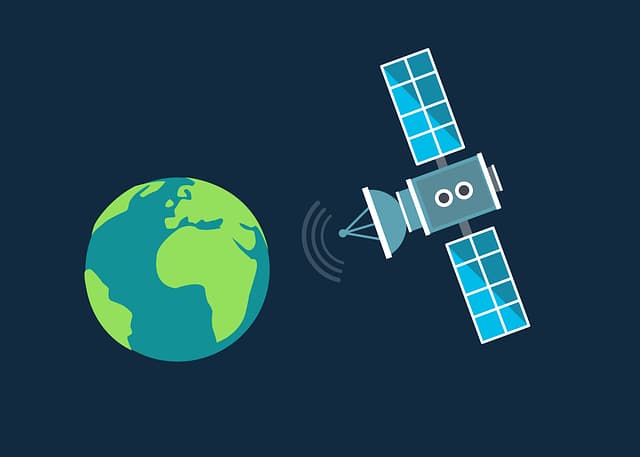Any satellite network usually has 3 components:
- Satellites
- Ground stations
- Terminals (mobile devices)
Typically, when connecting to a satellite network, the terminal first connects to the satellite. In turn, the satellite transmits information to one of the ground stations for further routing.
Advanced satellite systems can maintain and transmit connections between satellites and terminals without the involvement of base stations.
Satellites are the most important part. They can be divided into several categories, depending on the type of orbit. Radio and telephone satellites are divided into just 2 types:
Geostationary orbit (GEO), 35,786 kilometers (22,236 miles) above the Earth
Low Earth orbit (LEO), 640 to 1,120 kilometers (400 to 700 miles) above the Earth
The first type can provide virtually uninterrupted service with a much smaller number of satellites: as few as 3-4. At the same time, LEO satellite networks will need from 40 to 70 satellites to operate. The low number of satellites makes it cheaper to launch GEO systems, but the satellites themselves are heavier and more difficult to produce than their low-orbit counterparts.
LEO satellites have lower data latency but lower throughput, averaging around 2-9 kbps. By comparison, GEO satellites can have speeds in the neighborhood of 60-512 kbps. Also, it is worth noting that network speeds are improving as technology advances and it is possible that in the future satellites will be able to provide high speed internet.
Another disadvantage of geosynchronous systems is the limitation of their availability on Earth. The signal from such satellites can only be picked up within 70 degrees north and 70 degrees south of the equator. Mountains and dense forests can impede signal penetration. Satellites in low-Earth orbit have no such limitations because multiple satellites are available at any given time.
Because of the constant movement of LEO satellites around the Earth, companies producing LEO systems need to monitor service availability. To avoid communication discontinuities – LEO satellites can be combined into constellations of satellites and be able to communicate with each other. Within a constellation, satellites can usually be combined by orbital planes.
GPRS networks have seen rapid growth and progress, but satellite systems have not stood still either.
Satellites and GPRS – a comparison
Today, satellite terminals can be no different in size from standard smartphones. Compared to mobile networks, satellite systems have the following advantages:
Better network coverage
Protected data transmission
Weather conditions do not affect the signal
Network coverage is the main advantage. No tethering to cell towers allows satellite networks to work in remote areas, aviation and shipping, as well as, disaster and war-affected areas.
Satellite networks are also available for personal and scientific spheres. From simple walks in the mountains to scientific expeditions to polar regions, satellites can help you stay in touch.
Unfortunately, no system is perfect. Satellite systems also have a number of drawbacks.
The main ones are:
- High cost of equipment and service
- Low connection speed
- Limitations on using networks of other providers
Satellites have a high price to use the network. It is more difficult to send a signal to a satellite than to the nearest cell tower, accordingly, the providers’ prices are higher. It is worth noting that many companies offer equipment for rent.
Terminals, as a rule, are designed for use in a particular network and cannot be configured to receive data from another provider. In addition, the terminals themselves often do not have the same prevalence as cell phones. Satellite terminals may also be subject to local government bans.









